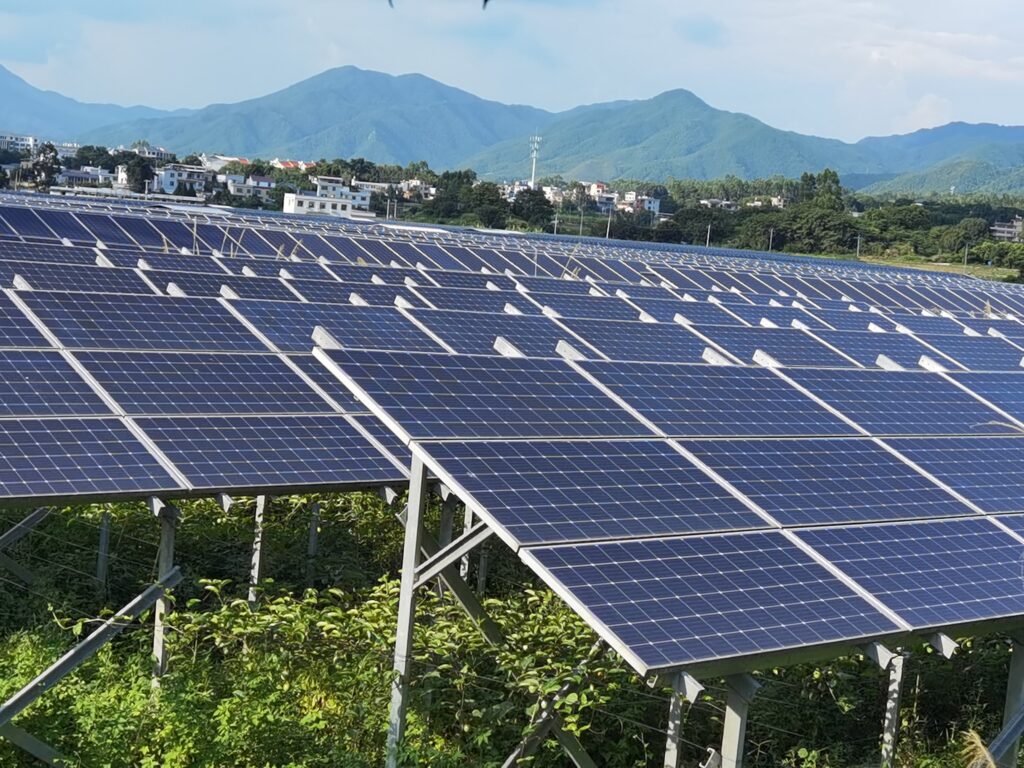How to clean solar panels?
Solar panels are a great way to use renewable energy in your home, but over time. They get really dirty. In order for your solar panels to work efficiently, it is best to clean solar photovoltaic panels, especially when they are particularly dirty. In this article, we will teach you how to clean solar photovoltaic panels. In addition, other common questions about clean solar panels can be addressed.

Manual cleaning brush cleaning steps:
1.Turn off the entire solar panel system before proceeding to clean the solar panels.
2. Utilize a manual cleaning brush combined with a stream of water from a spray hose to remove loose dirt and debris from the surface.
3. Use a soft-bristled brush with a mild detergent (e.g., detergent-water mixture) to scrub the panel surface.
4. Rinse the cleaner residue from the panel through the hose and allow it to dry naturally in the sun.


2.Spray the panel using the hose. After flushing away loose dirt and debris adhering to the surface. Subsequently, the solar panels and the surrounding roof are rinsed using a garden hose equipped with a spray function. This loosens the dirt and simplifies the subsequent wiping of the panels. Special note: If the panels are hot, do not spray them directly with cold water, as the rapid temperature change may cause them to crack. You should wait for it to cool down before cleaning, or switch to warm water for rinsing to avoid damage. At the same time, please avoid using high-pressure cleaning equipment, as the high intensity of water pressure may cause damage to the solar panels.

3. Use a long handled roof cleaning brush (or sponge if you are on a roof) to apply the cleaner to small areas of the solar panels. Allow the cleaner to sit for a few minutes to break down the stain, then gently wipe it away. Repeat for each area until the solar panels are thoroughly cleaned. If the panels are out of reach, try wrapping a soft cloth around the cleaning brush on the extension pole.
CAUTION: Avoid harsh chemicals, such as bleach, which can damage solar panels and pose a threat to neighboring wildlife. Please do not use rough brushes likewise can cause scratches and damage to the panels.

4.Grab the water hose and rinse the panels again, making sure all the cleaning solution is washed off let them dry naturally in the sun.

Motorized solar panel cleaning brush:
If cleaning solar panels with soap is too cumbersome and you are worried about the effects of residue, then a professional solar panel cleaning brush may be the ideal choice. It uses the same cleaning method, but ensures that the panels remain intact, protecting you and your family’s health.
Advantage:
- Fast and efficient cleaning;
- wet and dry;
- The bristles are soft and will not damage the panels;
- No need to worry about soap residue, more environmentally friendly;
Disadvantages:
- Compared with manual cleaning tools, the acquisition cost of electric cleaning equipment will be a bit higher.


common problems
Can I use dishwashing detergent or soapy water to clean my solar panels?
Yes, as long as it is a safe method of cleaning your solar panels that is gentle, effective, and biodegradable. Then just mix it with water and gently scrub the solar panel, then rinse thoroughly to remove the soap residue.
What is the best brush for cleaning solar panels?
A cleaning brush with a long shaft and soft bristles is usually used to clean solar panels without scratching or damaging the panels. Shorter brushes make it difficult to reach distant places.
How many solar panels can be cleaned in a day?
A motorized roller brush can clean a PV plant around 1-1.2 MW in a day.
The motorized rotating single head can clean a PV plant of about 0.5 MW per day.
How often do I clean my solar panels?
This depends on where your solar panels are located and the season, for example is less frequent cleaning in winter than in summer.
Conclusion
Solar panels are less efficient if they are covered in dust. Solar panels consist of photovoltaic cells designed to capture sunlight and convert it into usable energy. In order for the cells to fully absorb the sunlight, they must remain free from debris or dirt, which emphasizes the importance of keeping solar panels clean.
Solar cleaning brushes are available in different types (manual or electric), products (Double head, single head, rolling brush), sizes (3.2/5.5/7.2 m or 4.8-9m), power supply programs (AC power version, Lithium battery version, Dual power version, Motor (Bldc, Brush). Each one has its own pros and cons. To choose the best solar panel cleaning brush for your project, you should consult with professionals who can offer you the best choices and prices.
3.2m 5.5m7.2m Automatic Electric Telescopic Solar Panel Cleaning Machine










